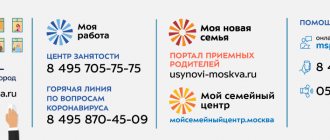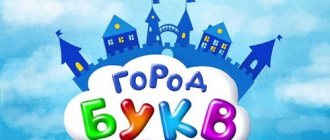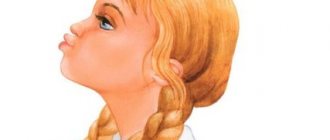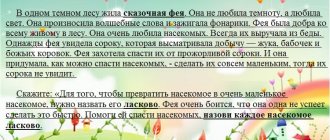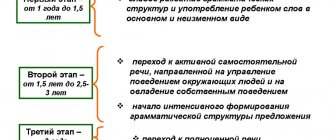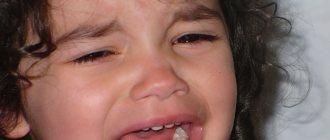We help with alalia. We work with children of all ages. We develop correction programs based on the child’s characteristics and try to avoid drug treatment.
Alalia is an underdevelopment of speech, or its complete absence, in which the child understands everything perfectly and hears clearly. As a rule, with alalia, a child cannot speak correctly due to a limited vocabulary or incorrect phrase construction. In the most complex form of the disease, speech is completely absent. In the mildest form, the symptoms of the disease are similar to those of underdeveloped speech. It is worth emphasizing that the child’s mental development progresses in accordance with his age. But social pressure can aggravate the situation: peers, relatives. This problem should be solved as early as possible, otherwise, in the future, there may be problems with the child’s socialization and self-establishment in society.
Multiple factors, which are usually divided into intrauterine and external, can influence the occurrence and development of the disease. As practice shows, alalia occurs due to a combination of several reasons.
Intrauterine complications include unsuccessful abortion, threatened miscarriage, excessive use of drugs by the mother, complicated toxicosis, bad habits, falling on the stomach, difficult childbirth during which the child was injured, and illnesses of the mother during pregnancy.
External causes of the formation of alalia in children under three years of age include previous encephalitis, bilateral pneumonia, ARVI, rickets, meningitis, as well as traumatic brain injuries, anesthesia during surgery, and insufficient attention of parents to the child’s speech development.
According to modern classification, the disease is divided into three types:
Sensory alalia.
The child speaks incoherently and his speech cannot be understood. At the same time, he hears what is said to him, repeats sounds, knows basic words, but cannot understand the essence of someone else’s speech. Symptoms of sensory alalia are expressed as follows: the child is very sensitive to sounds, since he does not understand words; his speech is incoherent and meaningless; Gestures are widely used; the child has very active facial expressions; a child can combine two words into one, put the wrong ending at the end, skip letters; the child practically does not remember new words; sudden changes in mood and activity.
Definition and causes of alalia
Alalia is a lesion of the nervous system, which is characterized by a complete absence or severe underdevelopment of speech in young children. Alalia is caused by lesions of individual centers of the brain, which are called speech centers. You don't need to be a speech pathologist to notice this. The child not only pronounces sounds incorrectly (or does not pronounce them at all), but also cannot construct a phrase logically correctly: he rearranges words, confuses cases, etc. At the same time, such children have normal intellectual development in other respects, but underdevelopment of speech can ultimately lead to other problems. Experiencing a lack of communication and not having a good vocabulary, the child will become withdrawn and difficult to learn.
Parents often confuse alalia with more serious problems: deafness and its consequence - muteness (since the child does not hear anything, he does not learn to reproduce speech). At an early age, especially in infants, the symptoms of all these diseases are similar to each other, so they can be confused. However, parents can do a simple test if they notice that their child is not making the sounds they should be making at the appropriate age. You can simply call the baby in a voice with different intonations and see how he reacts to it. For older children, you can give some kind of request (“give me a spoon”), which will show how much the child understands the meaning of what was said. If abnormalities are detected, the child must be shown to a specialist.
Statistics show that alalia affects about 1% of preschool children. Primary school children are less susceptible to this disorder, since by this age they are usually cured of alalia. As for differences between the sexes, sensory and motor alalia are more common among boys than among girls. Alalia begins to develop during gestation, in the postpartum period, or during the first three years of life. The causes of alalia are:
- Injuries received by a child during fetal development or during childbirth;
- Infectious diseases, poisoning and other pathologies suffered by a woman during pregnancy;
- Pathological pregnancy with frequent threat of termination;
- Infectious diseases suffered by the child during the postpartum period;
- Transient or, conversely, protracted labor;
- Hereditary predisposition.
In addition, alalia can develop after the use of obstetric and surgical instruments during childbirth. Even if a child was born healthy, the risk of getting alalia remains in the first years of life, when the body’s protective functions are poorly developed. Various viruses, diseases of the endocrine system and poisoning lead to depletion of the nervous system and a lag in the development of certain brain functions. Other factors are associated with unfavorable environmental conditions and the psychological microclimate in the family. Stress and nervous tension are experienced by children no less difficult than by adults.
Motor alalia
With this disease, children, as a rule, do not speak at all, or speak quietly and their speech is slurred. At the same time, they fully understand what other people are telling them, and if necessary, they can prove this using gestures.
Symptoms of motor alalia:
active facial expressions and gestures;
due to a limited vocabulary, the child often does not understand what is being said to him;
lack of speech or slurred pronunciation of sounds;
fatigue, inability to work, mood swings;
violation of fine motor skills.
The most severe form of the disease is sensorimotor alalia. With this form, the child cannot understand what is being said to him and cannot say anything.
Sensory alalia is easier to treat than motor alalia.
Recommendations for parents
Recommendations for parents I. Development of speech understanding. Creating a special speech climate at home: accompanying with speech commentary everything that the child sees and does in everyday life, during routine moments, games, walks. 1. When getting ready to go for a walk, an adult says: “Where is the hat?” - Here's the hat. - Let's put on a hat. — The hat is warm. — It won’t be cold outside. 2. Clarify the cause-and-effect relationships between phenomena. The child hears the noise of a vacuum cleaner (drill or other household appliance). Usually children are afraid of extraneous loud noises, especially children with hyperaccusia (...) Mom explains, saying: - The vacuum cleaner is humming: U-U-U. — The vacuum cleaner collects garbage. — The carpet will be clean. - Let's put toys on it. 3. Bring meaning to the child's stereotypical interests. For example, many boys love to watch cars driving along the road. The adult tells the child that his uncle takes the cars to work. The uncle will earn money and buy his son a toy. 4. Bring meaning to the child’s stereotypical actions. For example, a child turns on and off the light. The adult says: “You’re great. You work as an electrician and check that everything is in order.” For example, a child is constantly spinning the wheels on a stroller, etc. An adult says: “You are a master. You are fixing a stroller." 5. Comment on the feelings and sensations of the child himself, verbalizing his reactions. A) For example, when a child comes to classes at the center, he screams, cries, and refuses to study. The instructor (speech therapist, teacher) begins to hug him (takes him in his arms), and accompanies the actions with a speech: “We are glad to see you. Who came to us? What a good boy he came to class. The toys are already waiting for you. We need to quickly go deal with them.” In this way, the child is included in the usual rhythm of classes. B) Help to understand the emotional reactions of other people that are incomprehensible to the child. For example, an adult says: “The child is crying because he is small, he wants to eat (he is tired, wants to sleep...).” 6. Use the “one-way dialogue” technique in everyday life: an adult asks a question to a child, pauses, gives the child the opportunity to answer, and then gives a short answer. No attention is paid to the quality of pronunciation. An adult should encourage any verbal reaction (“Well done,” “Clever girl,” “Oh, how well you did,” etc.). Try to avoid the words “say”, “repeat”, while “provoking” the child’s speech. Either the mother herself says everything, or the child tries to repeat something together with the mother, or the child gives an independent answer to something. For example: - Misha, let's go wash our hands. - What do we do? - To wash hands. The questions may be different, with gradual complication. - What are we going to wash? - Yes, hands. - How will we wash our hands? - Soap. -Where is the soap? - Here's the soap. - What are we going to wash with? - Soap. In case of echolalia. An adult asks a question and, without waiting for an answer (does not give time for an answer), answers himself. - What are we going to draw, Dom? 6.1 Commenting work must be carried out not only during classes, but also during games and, especially during special moments, throughout the day. Plan your day in the morning: “What are we going to do today?” In the evening, sum up: “What did you manage to do?” Thus, the child learns planning, develops impressive speech (understanding), and comprehends the events of the day. It is important that this becomes a daily ceremony. 6.2 Next, this order must be transferred to the story. In this case, you can use an episode of the day, the plot of a story in which the child participated. The element of joint activity between an adult and a child is very important: the mother draws events, and the child, for example, paints. Thus, whole series of plot stories can be drawn in pictures. The same episode can be repeated repeatedly. The main goal of the work: listening and understanding the plot of the story. 6.3 When reading fairy tales and poems, you can pursue several goals: • focus on rhythm and melody (which happens automatically in children). • use the technique of dramatization: when reading familiar poems, attract toys. • memorizing short poems and stories, especially with a step-by-step plot (stories and pictures by V. Suteev, N. Radlov, poems by A. Barto, K. Chukovsky) II. Stimulation of active speech. 1. Use linguodidactic techniques with support for routine moments: A) Everything that the child interacts with is called by the mother (parents) repeatedly and always with the same word (phrase, simple phrase). For example: - Who came? - Dad. - Dad's love! - Let's go kiss him! B) When a child asks an adult for something, he echoes the correct version of the request (speech sample). For example: Vv Adult: Drink! Give me a drink! ! It is necessary to encourage any verbal reaction of the child, regardless of the quality of pronunciation. C) Reproduce the situation in which the child had one or another sound (verbal) reaction (word). For example, a child is building a tower of blocks and says “bang” or “fell.” We will repeatedly present this situation, heating it up and causing a verbal reaction. If the child does not react, then the adult speaks for the child. D) Automate, consolidate words that are repeated daily in everyday situations. Always use a newly appeared word and introduce it into speech situations. If a child’s speech contains patterns (clichés, stereotypies), then an adult can diversify the intonation. For example, - Let's go for a walk! - Let's go for a walk? - Let's go for a walk... 2. Induce echolalia (at this stage this is favorable) and involuntary verbal instructions: A) Use of physical rhythms, rhythms of the child’s movements. • For example, a child is jumping, and an adult says several times in time with the jumping: “Jump-jump, jump-jump, jump-jump, Like a bunny, like a bunny, like a bunny jumped.” • For example, to the beat of a swing, an adult says: “Kach-kach, kach-kach, kach-kach, I fly up like a ball.” ! It is necessary while swinging on a swing (playing with a ball), to artificially pause (break), beat it with the exclamation: “Uh-uh” (“Uh-uh”) and then swing, accompanied by a verse. B) Training of auditory-motor coordination: the use of rhythmization techniques (non-verbal: with the help of movements and verbal: with the help of poetic text). • Folk nursery rhymes, simple rhythmic poems, finger games are used, involving speech and finger movements, together with the mother (for example, magpie-crow, ladushki). • Rocking on a rocking horse and reading poetry at the same time (for example, the poems by A. Barto “I love my horse”). • A combination of poems and general movements (for example, “A clumsy bear walks through the forest”). ! Before the last word there is a pause, we provoke the child to “finish” the last word. An adult can speak for a child in a whisper. If the text of the poem allows, then you can hold the child on your lap and accompany the verse with rhythmic movements of tossing on your knees (for example, “Over the bumps over the bumps ..., into the hole thump”). C) The inclusion of sounds in well-known games, poems, fairy tales (“a-a-a” - cries), interjections (“boom” - fell), short words (“I’ll catch up”) that are easy to pronounce. ! Every time a child wants something, offer him a speech sample. 3. Stimulate involuntary imitation of the action, facial expressions, and intonation of an adult. It is important to ensure that the child looks into the eyes, mouth, face of the adult (at the adult’s mouth, squeak with a toy, a bell, snap a finger, click your tongue). You can use sensory and motor impressions that are pleasant for the child: stringing beads, blowing soap bubbles, playing with a ball, putting together pictures, construction sets, puzzles, etc., which is pleasant for the child. ! At the same time, we use linguodidactic techniques: clicking the tongue, making grimaces, accompanying movements with exclamations: “W-w-w”, “U-uh-uh”, etc. 4. Repeat after the child all his sound reactions and vocalizations. At the same time, we beat them, it is also necessary to use vocal autostimulation. Any child’s sounds are played out and transformed (translated) into real words. For example, a child says: “Boo.” The adult continues as follows: “I will, I will play with you (sing, eat...)” (depending on the relevant specific situation). ! It is necessary to speak (finish) in this way constantly, since the child gets used to the fact that they are “talking” to him, answering, calling each other. Let's emphasize again. In the presence of autistic traits: A) Explain the cause-and-effect relationships between phenomena. For example: a child is afraid of something, an adult tells what is happening (For example, an uncle takes a drill, hammers a nail, etc.). B) Bring meaning to the child’s stereotypical interests and actions. For example: a child runs back and forth without a goal. Lie into the game, give instructions: “Run for the cube,” etc. Comment on all actions: the tractor does..., this is a drawing of a tractor. Swing: up and down, flying high, low, “swing-swing”, read poems about swings. C) “Comprehension” of autostimulation: - The child swings senselessly, and the adult reads the poem “Bear with a Clubfoot.” “The child knocks senselessly, and the adult says: “This is a train going knock-knock.” — The child turns the light on and off, and the adult says: “You are a master, let’s check how you fixed it: “Turn on the light!” D) Stories about yourself: In the morning: about plans, In the evening: the result, what they did. When creating recommendations, the works of M.M. were used. Liebling, E.R. Boenskoy, O.S. Nikolskaya.
Diagnosis and treatment
You should consult a doctor if, when your child reaches 3 years of age, you notice that his speech is not developed enough. Even active treatment, but at a later age, may not give the expected results.
Alalia is a dangerous disease that can lead to mental retardation. In some cases, pathological personality traits and character formation of a neurotic type may develop. Children with motor alalia show isolation, lack of self-confidence, irritability, touchiness and a tendency to cry.
To overcome the disease as quickly as possible, you should listen to the recommendations of specialists: everything that the doctor prescribed must be done in full and on time.
Diagnosis of the disease should be carried out by specialists. It includes electroencephalography, echoencephalography, skull radiography, MRI.
To determine the form of the disease, otoscopy and audiometry are also performed.
The speech therapist evaluates auditory-verbal memory and speech. A neurologist, otolaryngologist and psychologist are also involved in the work.
Thinking games
These games are offered to the child according to the principle “from simple to complex .
First, he is asked to compare objects by color and size, and then by more significant characteristics.
- Arrange the pictures according to some criteria: what we eat, what we wear, etc.
- Put together one picture from the cut pieces , first from two, then from 3-4. A complication is to offer pictures in which the image is on both sides.
- Guess what is drawn in the picture based on its part.
- “Mailbox” - lower the figures into the box, selecting the desired hole that suits the shape.
- “Who needs what” - match the tools of action to the actions depicted on different cards (a net for a girl catching a butterfly, a comb for a shaggy girl, a needle for a boy with a hole in his shirt).
Classification and symptoms of the disease
The clinical picture for different types of pathology may differ significantly. Doctors distinguish the following types of alalia:
- Sensory – characterized by the ability to recognize sounds and remember words (sometimes without realizing their meanings), active use of gestures and facial expressions for communication, incoherence and meaninglessness of pronounced sound combinations. Mood swings, alternating periods of activity and apathy, combining words, replacing endings and missing letters or syllables may also be observed.
- Motor – requires a clear understanding of speech requests with the inability to speak clearly and loudly. Children with this diagnosis get tired quickly, are capricious, often gesticulate and have problems with fine motor skills.
- Sensory-motor is the most serious type, in which there is a lack of both the perception of someone else’s speech and the ability to coherently express one’s own thoughts.
The disease can be accompanied by either a complete or partial absence of speech skills, and pathology can be suspected as early as three years of age. Having noticed manifestations of underdevelopment, parents should immediately make an appointment with a speech therapist at our center in order not to progress the disease and begin treatment for alalia on time.
What leads to speech underdevelopment?
Very rarely, deviations from normal development occur under the influence of only one factor - as a rule, there is a combination of two or more pathologies, as well as adverse external influences. The main reasons for alalia are:
- unsuccessful attempts at late-term abortion;
- severe pregnancy (severe toxicosis);
- the mother's intake of alcohol, drugs or large amounts of medications during pregnancy or breastfeeding;
- injuries to the mother’s abdomen in any trimester;
- bilateral damage to the cerebral cortex at the time of birth;
- serious pathologies of the nervous system – encephalitis, meningitis;
- systemic disorders of the central nervous system;
- frequent acute respiratory infections and pneumonia;
- metabolic disorders due to lack of vitamins and minerals (rickets);
- head and neck injuries in the first years of life;
- insufficient speech education.
Reasons to start treatment in our center
The Zelenov Clinic has been helping children get rid of alalia and other speech dysfunctions for more than 10 years, maintaining the reputation of a trusted center where you can count on:
- selection of therapy methods taking into account the individual characteristics of the body and the character of young patients;
- the use of truly effective techniques, including the unique developments of our speech therapists and neuropsychologists;
- achieving a complex effect - correction of alalia allows not only to develop the baby’s ability to speak, but also to rid him of complexes, help him socialize, accelerate the development of intelligence and stimulate the cognitive functions of the brain;
- advance discussion with the speech therapist of all aspects of the program and the number of sessions, which allows you to subsequently avoid unplanned costs for additional lessons;
- conducting classes in conditions that are comfortable for the child - if there is no desire or opportunity to study in the center, there is the option of organizing meetings at home;
- improving pronunciation after just 6 individual lessons - we are confident that we can help your son or daughter start speaking correctly and establish contact with other children.
